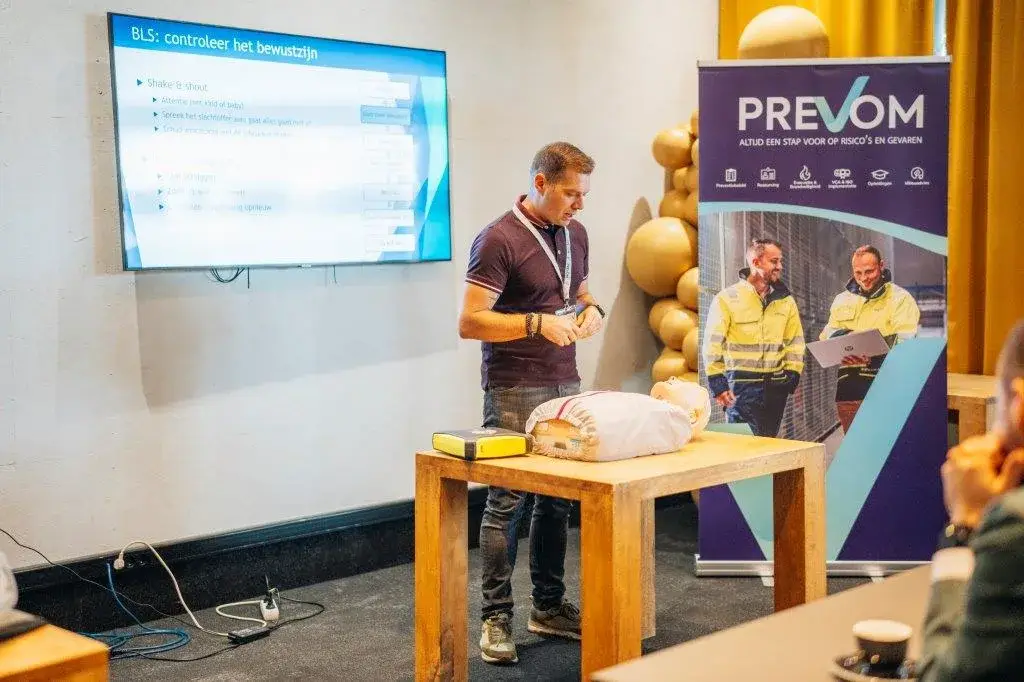First Aid legislation

Organising first aid in a company is not only a legal requirement, but also crucially important. In many sectors, the risks are significant and accidents with serious consequences occur more frequently (especially in the construction sector). A well-structured first aid system allows for a quick and efficient response in the event of an accident or incident.
Table of contents
It is important not to think only of large industrial accidents. Minor incidents such as cuts, sprains, fainting spells, or allergic reactions can also have serious consequences without proper intervention. Companies must tailor their first aid organization to the specific risks of their sector. A construction company will require different first aid materials and procedures than an office environment. Regular risk analyses and updates to internal first aid plans are therefore essential to remain prepared for new challenges.
Legislation and guidelines
- Codex book I, title 5
- Recommendations from the High Council for Prevention and Protection at Work: Recommendation No. 172 of 29/07/2013
- Recommendations from the High Council for Prevention and Protection at Work: Recommendation No. 142 of 19/06/2009
- Recommendations from the High Council for Prevention and Protection at Work: Recommendation No. 123 of 15/06/2007
- Specific provisions from Annex III of the Royal Decree on temporary and mobile construction sites
What are the safety risks when providing first aid?
Panic can be a major pitfall in providing first aid. Insufficiently trained employees may make wrong decisions, potentially worsening the victim’s condition. There’s also a risk of secondary accidents, for example when a first aider puts themselves in danger to help someone. That’s why it’s essential to train not only technical skills, but also mental preparedness.
First Aid safety tips
- Training and education: Ensure appropriate training and (mandatory) annual refresher courses via an official training center.
- Instructions: "What to do in case of…" clear guidelines.
- Procedures: From internal emergency plans to efficient internal and external communication systems, and safety drills.
- Resources: First aid supplies (depending on sector, activity, and company size) – including basic kits and regularly inspected supplements.
- Risk analysis: To identify hazards and take appropriate measures.
- Compliance with legislation
Conclusion
Things can go wrong in any company — accidents happen in the blink of an eye. That’s why it’s vital that organisations are well-prepared. It’s a crucial part of a safe working environment: taking the right actions as quickly as possible and providing necessary care to victims.
First aid at work — together we ensure a safer workplace!
An active first aid policy not only increases safety, but also boosts employee confidence and satisfaction. Workers who know that incidents will be handled quickly and effectively feel safer and are often more engaged with the organization’s wellbeing policy. A well-equipped first aid station, visible emergency procedures, and clearly identifiable first aid staff are absolute essentials for every company.
For more information or specific questions, feel free to contact our team and visit our trainings page: First aid training for companies.
Looking for clarity?
Prevom has the expertise you are looking for.
We will be happy to inform you about the possibilities!